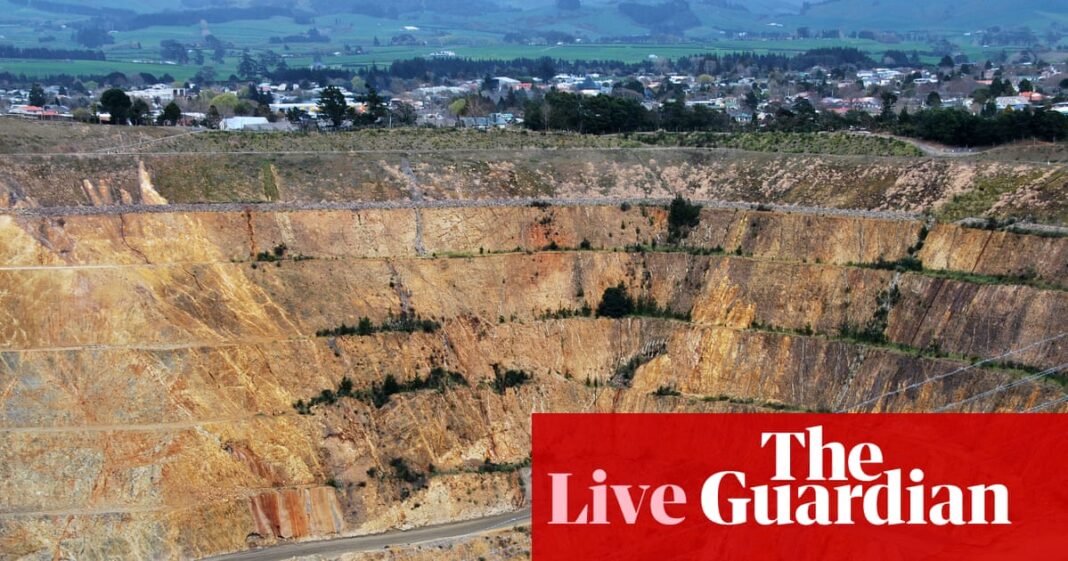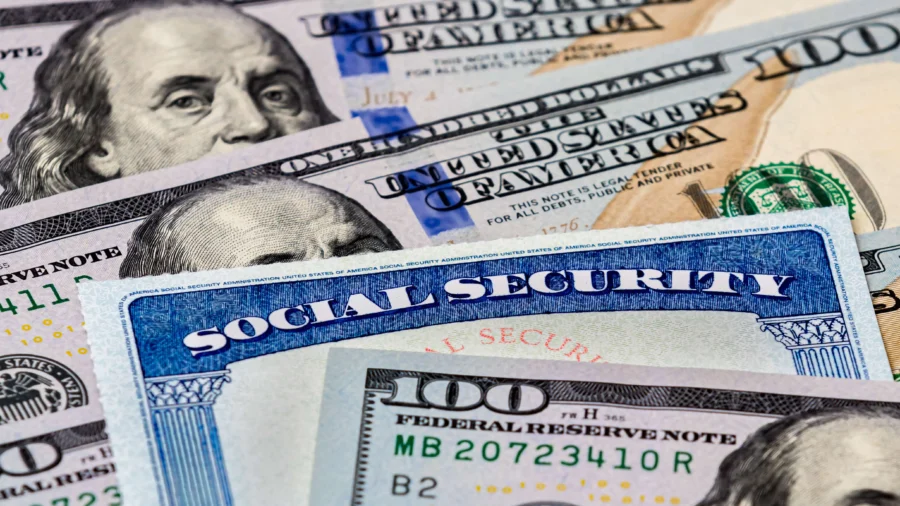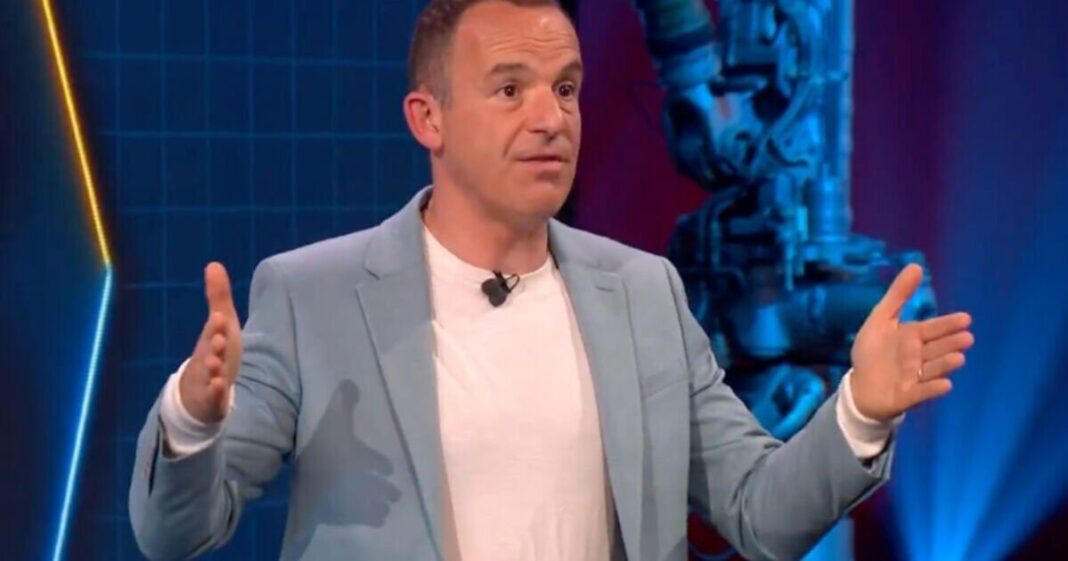Key events
Mining shares lifted by gold rally
Mining shares are now leading gains on the FTSE 100 index, on the back of the inexorable gold rally – which has taken the precious metal above $4,000 an ounce for the first time.
Antofagasta, which mines gold and copper in Chile, has just overtaken Lloyds Banking Group as the biggest riser on the FTSE 100 index, with the miner’s shares up by 2.7%.
Endeavour Mining, one of the world’s leading gold producers and the largest in West Africa, is nearly 2.7% ahead, pushing Lloyds into third place on the blue-chip index.
The Mexican precious metals group Fresnillo, the world’s leading silver producer and one of Mexico’s largest gold producers, rose by 1.4%.
Car finance scandal: bank shares rise on relief over FCA update
Shares in Lloyds Banking Group, Close Brothers and other car finance lenders surged after the City regulator said they will make lower-than-expected payouts to victims of car finance mis-selling.
Lloyds, which owns the UK’s largest motor finance provider, Black Horse, is the biggest riser on the FTSE 100, up by 3.2%. London’s leading share index is 0.4% ahead at 9,519, marking a new intra-day high.
NatWest Group (which got rid of its motor finance business a few years ago) is another big riser, up 1.8% and Barclays has gained 1.4%. On the FTSE 250, Close Brothers jumped as much as 6%. Shares in the specialist lender Secure Trust, listed on the FSTE Smallcap index, leapt by 4.2%.
Russ Mould, investment director at the stockbroker AJ Bell, said:
The motor finance scandal is proving to be less dramatic than thought. Lloyds’ shares jumped after the regulator proposed that motorists would get £700 on average in compensation, lower than the previous indicated amount of £950.
Lloyds has already taken a £1.2bn provision to cover the cost, which now looks like a reasonable assumption. The fact its share price jumped means the market is comfortable with the outcome and that a big uncertainty factor will soon be removed.
Lloyds’ management will be keen to shift the market’s focus to the bank’s growth opportunities in the future, not what it has done in the past.
Victims of the UK’s car finance scandal are likely to receive compensation payouts averaging £700 resulting from 14m unfair loans, the City regulator said yesterday in an update on the redress scheme. The Financial Conduct Authority (FCA) previously suggested motorists could receive just under £950 per deal.
The FCA said lenders could end up with an £8.2bn compensation bill, although this could go as high as £9.7bn.
“It’s time their customers get fair compensation,” said Nikhil Rathi, chief executive of the FCA.
He said,however, that it is a complex issue and “not everyone will get everything they would like”. The regulator added that it is keen to create the best possible scheme “and draw a line under this issue quickly”.
It still looks likely to be the biggest mass payout relating to a financial product since the payment protection insurance (PPI) mis-selling debacle, which led to 34 million consumers receiving an average of about £1,000 each. Lloyds was also the main financial institution selling PPI in the UK.
Oil prices rise 1% as oversupply fears ease after Opec+ limits output increase
Meanwhile, oil prices have risen by 1%, as investors weighed up signs of a supply glut against a decision by the oil cartel Opec and allies such as Russia to limit production increases next month.
Brent crude futures rose by nearly 1% to $66.08 a barrel, while US West Texas Intermediate crude climbed to $62.39 a barrel.
Emril Jamil, a senior analyst at LSEG Oil Research told Reuters:
The market is in price limbo, with one side bent towards a possible supply glult and the other believing the ramp-up will not be as fast as anticipated.
John Reade, senior market strategist, EMEA at the World Gold Council, has sent us his thoughts on gold hitting $4,000 an ounce for the first time ever.
As investors seek shelter in the precious metal, it has now surged to $4,036.79 an ounce, up 1.33% on the day.
Believers in the Efficient Market Hypothesis may argue there is nothing special about a landmark level for the price of an asset or an index; but market practitioners would beg to differ. The latest record price of US$4,000/oz, a very big figure indeed, has acted like a magnet on the market over the past two weeks, with gold drawn inexorably towards this new high.
We are witnessing the biggest gold rally since the 1970’s with the price doubling in two year’s time. So what’s behind gold’s unstoppable climb to US$4,000/oz? The drivers have shifted, but the trend is clear—investors across sectors and continents are turning to gold as a hedge against relentless economic uncertainty.
Most recently, Western investors have been front and centre. The US government shut down, ballooning Federal debt and US dollar weakness have triggered a renewed flight to safety. In September alone, North American-listed funds drove global inflows into gold-backed ETFs to a record high, pushing Q3 totals to an unprecedented $26bn.
Will Newton’s law of “what goes up must come down” apply to gold? Maybe, but not anytime soon. While some profit-taking, and short-term corrections are likely, as long as the storm of economic volatility continues, investors will seek shelter in gold.
Mateusz Urban, senior economist at Oxford Economics, is equally gloomy about the German car sector and wider economy.
While we expect a partial recovery in September in line with more timely car production data, this puts industry on track for a quarterly drop in Q3, meaning the economy likely shrank as well.
Worryingly, the near-term outlook does not leave much hope for a sustained recovery. New factory orders shrinking consistently since May and core orders falling sharply in August point to persistently weak demand for German goods amid drags from US tariffs and Chinese competition.
As sentiment remains weak, we do not expect the German manufacturing sector to embark on a sustained recovery until way into 2026. However, in line with subdued orders data we see a growing risk of a more protracted stagnation. This points to downside risk to our already below-consensus German GDP growth forecast of 0.8% next year.
German industrial production ‘drops like a stone,’ raising recession risk
More worries for Germany, Europe’s largest economy. “Dropping like a stone,” as one analyst put it, industrial production plunged by 4.3% month-on-month in August, taking output to the lowest level since 2020, and following a 1.3% rise in July.
The slump raises the risk of another quarter of economic contraction, which would put Germany into recession. The economy shrank by 0.3% between April and June, the second quarter of the year. Two or more consecutive quarters of contraction are defined as a technical recession.
Compared with August last year, industrial production was down by 3.9%, driven by manufacturing – the car industry in particular, where output slumped by 18.5%.
According to Germany’s statistical office, the sharp drop in production in the automotive industry can be explained, at least in part, by annual plant closures for summer holidays and production changeovers.
Carsten Brzeski, global head of macro at ING, said:
Let’s hope this is true. However, even if there might be some one-off factors at play, we fear that the sharp drop in industrial production also heavily reflects the end of US frontloading.
This remains the clearest illustration of the structural challenges facing German industry. More than six years since the pandemic began, industrial production in Germany is still some 15% below its pre-pandemic level. Production in energy-intensive sectors is still around 4% below its 2024 level. At the same time, the fact that capacity utilisation in German industry has now remained at the low levels last seen during the financial crisis for more than a year is another painful sign of this structural weakness.
Still, with the announced fiscal stimulus after the German elections earlier this year, optimism for at least a cyclical rebound had returned.
The second consecutive increase in construction activity also offers a glimmer of hope.
Gold continues to climb, and is now up 1.25% on the day at $4,0333.48 an ounce.
Stephen Innes, managing partner at SPI Asset Management, said:
The milestone is staggering in scale and symbolism. Just two years ago, bullion traded below $2,000. Now it has doubled, outpacing equities, real estate, and the very tech darlings that were supposed to define the future.
What’s fueling it isn’t mystery; it’s arithmetic. The global debt mountain has breached $330 trillion, and policymakers are doing what they’ve always done when confronted with unpayable numbers — inflating them away. The so-called “fiscal event horizon” has arrived, a gravitational pull of deficits so immense that not even the pretense of restraint can escape. In that black hole of credibility, gold shines precisely because it doesn’t yield, it doesn’t promise, and it doesn’t default.
Talking about the dizzying gold rally, ING commodities strategist Ewa Manthey added:
Uncertainty about the global economy is one of the main drivers, and the US government shutdown isn’t exactly helping sentiment either.
That shutdown has delayed key payroll data, further clouding an already uncertain economic outlook. With official data delayed, traders are relying on private reports for economic insight, while the central bank faces challenges in making monetary policy decisions. Still, markets are pricing in a quarter-point cut this month, which would further benefit gold, as it doesn’t pay interest. Policy uncertainty and growing bets on Federal Reserve easing are keeping safe-haven demand strong.
Investors are adding gold ETFs [exchange-traded funds] at a rapid pace. Last week, gold-backed exchange-traded funds expanded again, taking the total gold ETF holdings to the highest level since September 2022. There is still room for further additions, given the current total remains shy of the peak hit in 2020. More inflows could push gold even higher.
Introduction: Spot gold rises above $4,000 for the first time; car dealer Vertu Motors warns of £5.5m profit hit from JLR disruption
Good morning, and welcome to our rolling coverage of business, the financial markets and the world economy.
The price of gold has climbed above $4,000 an ounce for the first time, extending a rally fuelled by worries over political drama in Japan, France and the US, where the federal government shutdown has dragged on.
Spot gold rose by 1.15% to $4,029.46 an ounce, yet another record high, and is up 50% so far this year. This comes after increases of 27% last year and 13% the year before.
The precious metal is seen as a safe-haven in times of turmoil, and also used as a hedge against rising inflation.
The hedge fund billionaire Ray Dalio compared the current period to the early 1970s when soaring inflation and high government debt levels and spending undermined confidence in other assets. Speaking at the Greenwich Economic Forum in Connecticut last night, he said:
It’s very much like the early ’70s … where do you put your money in?
Gold is a very excellent diversifier in the portfolio. If you look at it just from a strategic asset allocation perspective, you would probably have something like 15% of your portfolio in gold … because it is one asset that does very well when the typical parts of the portfolio go down.
Investors’ appetite for all things gold seems undiminished. Investors have been piling into gold exchange-traded funds (ETF) with inflows hitting $64bn so far this year, according to the World Gold Council, with a record $17.3bn in September alone. Central banks have also been buying gold.
Expectations of further US interest rate cuts, worries over geopolitical and economic uncertainty, trade tariffs and an AI bubble, along with a weak dollar have driven the gold rally.
Ewa Manthey, commodities strategist at ING, said:
Gold has staged a historic rally, doubling in less than two years, spurred by central bank buying as it diversifies away from the US dollar, President Donald Trump’s aggressive trade policy and conflicts in the Middle East and Ukraine.
Looking ahead, central banks are still buying – the People’s Bank of China extended its gold buying streak in September for an 11th consecutive month despite record high prices – Trump’s trade war is still pressing on, geopolitical risks remain elevated, and ETF holdings continue to expand while expectations of more Fed rate cuts intensify. All of this suggests that gold has still further room to run.
The price of gold futures topped gold for the first time yesterday.
The British car dealership group Vertu Motors has warned of a £5.5m hit to its annual profits from “significant disruption” to its Jaguar Land Rover showrooms after the luxury carmaker paused production for five weeks following a crippling cyber attack.
Vertu’s chief executive Robert Forrester said it was “disappointing for the industry to face major disruption across the JLR network” during September, a key month for car sales as number plates are changed.
Whilst the situation is fluid, it appears to be easing in recent days.
Vertu, which is based in Gateshead near Newcastle, reported record half-year sales of £2.51bn for the six months to the end of August, up from £2.47bn a year earlier. Adjusted pre-tax profit fell by 10% to £20m.
It’s the last day of the Tory party conference in Birmingham. Later today, the International Monetary Fund’s managing director Kristalina Georgieva is due to give a curtainraiser speech ahead of the IMF’s meeting in Washington next week.
The US Federal Reserve will release the minutes of its last meeting, which will shed further light on its thinking, and the wide rift among officials regarding the policy outlook.
The Agenda
-
Conservative party conference
-
2pm BST: IMF managing director Kristalina Georgieva speech
-
4pm BST: Huw Pill gives lecture in Birmingham
-
7pm BST: US Federal Reserve minutes of 19 September meeting


